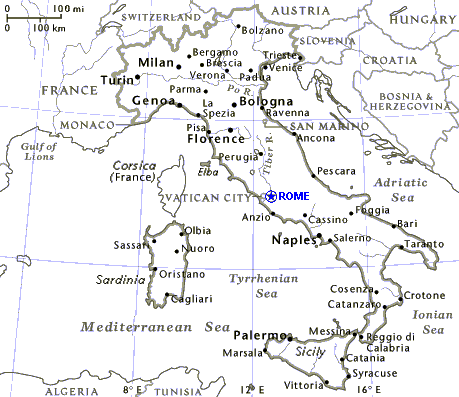Area
Population
Religion
Language
Literacy
Life Exp.
![]()
Although this mountainous peninsula, 1,130 kilometers long, was unified in 1870, two Italys exist today: the prosperous, industrialized north and the less developed agricultural south, known as the Mezzogiorno. Their differences reach back to the Renaissance, when northern city-states flourished while the Kingdom of Naples and Sicily languished under French and Spanish rule.
Proclaimed a republic in 1946, Italy was governed for nearly 50 years by revolving-door coalitions dominated by the Christian Democratic Party (CDP). When the CDP fell apart in 1994, the various parties jockeying for power faced familiar problems: corruption traceable to organized crime and an unemployment rate in the south more than twice that in the north. A series of short-lived governments followed before two large coalitions emerged, one to the right and one to the left.
Milan reigns as the first city of commerce, and the Po River plain is both Italy's agricultural heartland and southern Europe's most advanced industrial region. Italy imports almost all its raw materials and 80 percent of its energy sources. In the 1980s cheap oil invigorated the economy, but a huge national debt, partly due to heavy spending on welfare programs, brought calls for reform. The deficit slowly began to decline in the 1990s.
The success of local activism, including the halting of the nation's nuclear power program, mobilizes Italy's "green" political parties. Yet industrial and agricultural pollution of rivers remains a problem. Roman, medieval, and Renaissance monuments in Rome, Venice, and Florence are disintegrating under assault from pollution, largely exhaust from automobiles.
| Aviano |
